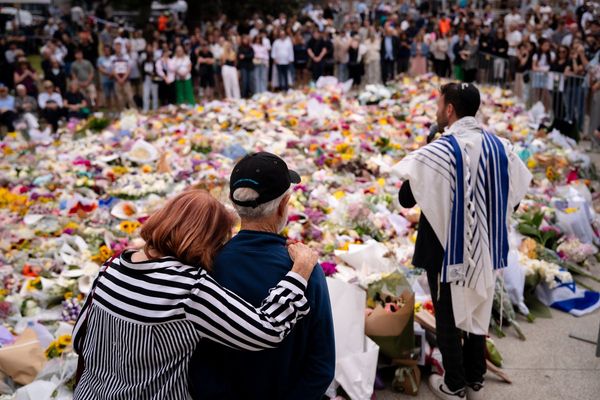
How do you make music sound cool? How can you explain why the soundtrack to, say, any of the spy films of the 1960s still sound cool decades later? How can Foxy Lady still get into your body and make you groove so much, 55 years since Jimi Hendrix laid down those slick licks? Jungle, Thundercat or Lil Nas X might be able to tell you – but so can the people behind the soundtrack to Deathloop, one of the most effortlessly classy-looking (and sounding) games in years.
Arkane’s mind-bending sci-fi thought experiment is a masterclass in cool. From its retro-futuristic take on 60s chic to its stylish, the world is your oyster level design, Deathloop understands that making you – and the people you play as – feel cool is essential. Dual protagonists Colt and Julianna are sassy, glam, and sophisticated, sure, but it’s the music that infuses Deathloop with its suave vibe.
“Music is more than 50% of the personality of this game and this world,” says composer Tom Salta. “It immediately creates an emotional connection and immerses you in another time and place.”
For Deathloop, that time and place is Blackreef in the 60s, a peculiar island where a space/time anomaly causes everything in a certain radius to loop every 24 hours. Want to know what it feels like to Base jump with no safety apparatus? Don’t worry, you’ll come back to life tomorrow. Want to party so hard your body gives out on you? No fret, you’ll wake up again on the morning before. Want to indulge in all the excesses of an alt-history 1960 with no consequences? Unleash your inner Jim Morrison, no one will blame you.

“My biggest concern was finding a way to sound late 60s but still have attitude, action, and punch,” says Salta. “Surprisingly, there’s not a ton of tough-sounding music from that era, so I had to home in on specific grooves and styles to support the hyper-action fighting in the game.”
In Blackreef’s residential district, Updaam, you might see a bunch of girls wearing bubbles over their heads performing a gig, or a massive party in a rich investment banker’s mansion, or residents milling around, preparing for the chaos at the end of the day before everything loops for the 700th time. But whoever is around, you are likely to get into a fight.
“The first piece of music in the game that came together and made me think: ‘That’s it, we’ve got it,’ was the fight music in Updaam,” Salta says. He namechecks the bass groove on one of his favourite Yes tunes, Roundabout, as a starting point: “That kind of feel seemed perfect for what I was after and worked really well.” From there, Salta brought in his friend and jazz keyboard legend, Philippe Saisse, “who put down a ripping Minimoog solo” that gave him confidence that Deathloop’s sound was coming together.
The music direction in the game can be traced back to just three tracks: Daniel Pemberton’s His Name Is Napoleon Solo from The Man from UNCLE, Tonbruket’s Linton and Pierre Henry and Michel Colombier’s Psyche Rock.

“That last one I like so much because it is a concentration of 60s rock ingredients with a touch of zany, experimental electronic music,” says Arkane Lyon’s audio director, Michel Trémouiller. “Tonbruket is more personal. I love Swedish jazz, so I’m fan of Esbjörn Svensson Trio, for which Dan Berglund was the former double bass player, and he is currently Tonbruket’s leader. In addition to their experimental approach to pop-rock music, they provide vintage and neo-psychedelic vibes, but with a more saturated and contemporary sound. They’re really hypnotic.”
For the game’s main theme, where Salta needed to cut all that effortless cool with some suspense, more unconventional methods were used to nail that classic spy-thriller sonic aesthetic. Because Deathloop needed to sound like Deathloop (it couldn’t just be a Bond or Bullitt knock-off), Salta opted to create a special signature sound for the game.
“One of the more unconventional instruments I explored was a Clavinet, instead of a guitar,” he says. “In fact, the main theme has no guitars whatsoever, which is quite unusual for this style of music.”
The concept of cool involves having confidence in what you’re doing without being too serious about it. Cool is playful and knowing, but not pretentious or arrogant: direct, intentional, relaxed. For Salta, “there’s a certain attitude … tough but not too serious.” For me, this perfectly describes Deathloop: it makes you feel like a bona fide badass, creeping around a stylised version of the 60s. You might have a controller in your hand instead of a pistol, but you still feel like George Lazenby or Steve McQueen.







